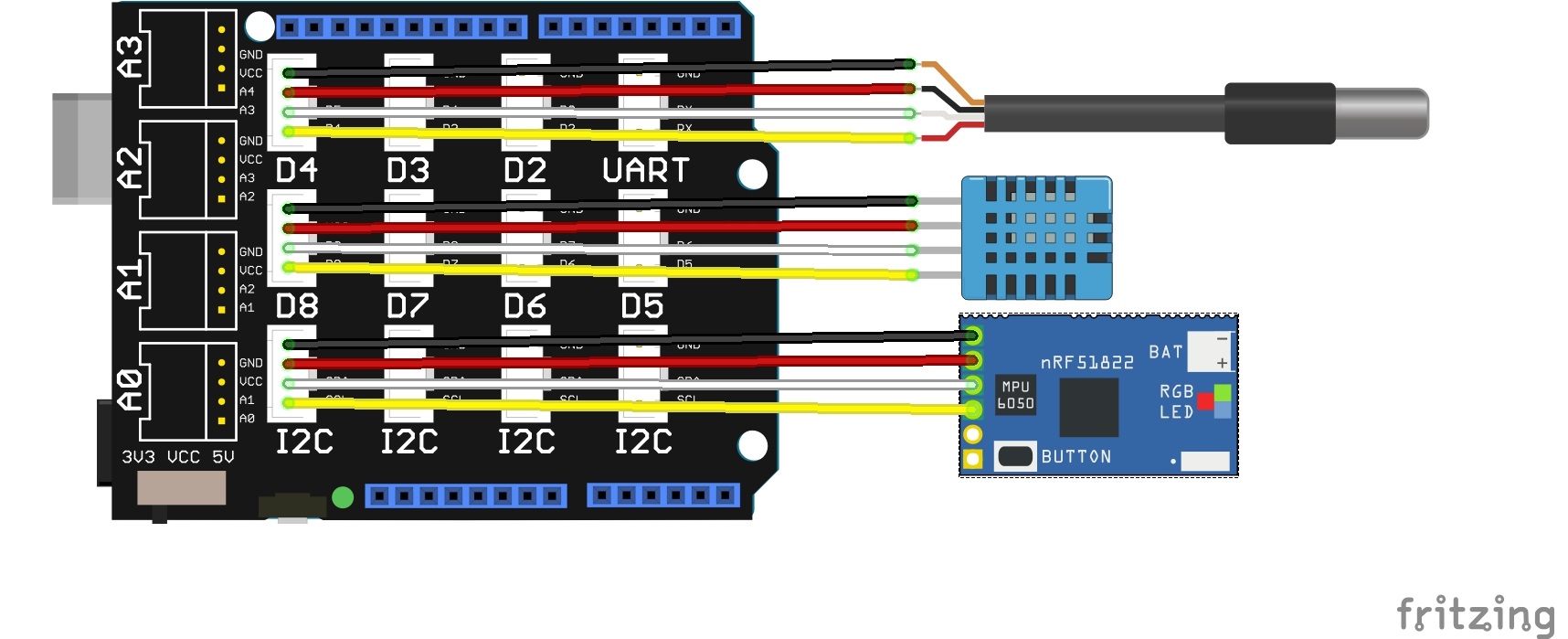Portable humidifiers are very popular for use in a variety of environments and the manufacturers of these devices promise not only humidification but also purification of the air when using their products.
I decided to check how effective the use of a humidifier is on the example of a small closed room (my office) - the size of the room is 10м².
Part 1 - Humidifier. As for the device, my choice fell on a small air humidifier with the following parameters:
- dimensions: 110 x 110 x 115 mm
- volume: 300ml
- capacity: 35ml / h
That's how it looks in a working state (water was used as liquid everytime):
As the device was standing on my desk, I felt that the air is changed and seems to be more fresh, but I didn't know for sure what is the effect and whether the humidity increases only in the area close to the device or it is increased in whole room.
Part 2 - Arduino connection. To check the efficiency of air humidifier I used arduino board Uno, grove shield for the board and three sensors:
- DHT11 temperature & humidity - to get the data about room temperature and humidity
- SGP30 gas sensor - to check the CO2 concentration on the room
- DS18B20 temperature sensor - to analyse the body temperature
That's how connected board with the shield and the sensors look like:
And this is the photo of the full setting with working humidifier and the electronic part:
I wrote a code to analyse the parameters and to connect the sensors with the board. I used online Vittascience coding platform to write the code, get the data graphics and save the data. My code is available online with this link or use the code below the text.
Part 3 - Experiment. I provided the analysis of room conditions and body temperature during three different periods: before usage of the humidifier, after one hour of the turned on air humidifier and after three hours of the device's work. So I made three data collections during three periods to get precise information - 9 experiments in total.
The conditions of the experiment were maintained the same:
- 3 meters between the working humidifier and the board with sensors
- duration of the data collection was during 30min
- the door of the 10м² room, where experiment was provided, was closed during all the time of the experiment
Here is how collected data looked like - this is the data that I got during the experiment that was provided one hour after the humidifier's work:
I analysed 9 excel files and got the following results:
- Average parameters before the humidifier's usage were: room temperature - 25 C°, humidity level - 51%, CO2 level - 400ppm, body temperature - 37C°.
- Average parameters after one hour of the humidifier's usage were: room temperature - 25 C°, humidity level - 58%, CO2 level - 400ppm, body temperature - 36.8C°.
- Average parameters after three hours of the humidifier's usage were: room temperature - 24 C°, humidity level - 71%, CO2 level - 400ppm, body temperature - 36.6C°.
- Common results: after one hour the humidity level increased by 13% and after three hours it reached 139% of the the base value; both room and body temperature showed a slight decrease; CO2 level didn't seem to change.
The experiment showed that even an air humidifier with small capacity can increase the humidity level in the room by 40% after three hours of work, which can positively affect both room and body temperature. But it completely doesn't not affect CO2 level.




_ztBMuBhMHo.jpg?auto=compress%2Cformat&w=48&h=48&fit=fill&bg=ffffff)











Comments
Please log in or sign up to comment.